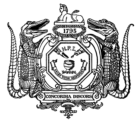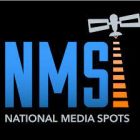The Department of Defense + The Agency for Healthcare Research & Quality + CRMG
In February of 2011, Charles River Media Group began collaborating on content and logistics with returning client, Abt Associates. This year, the narrative video project targeted Nursing Home Staff and featured TeamSTEPPS program, a teamwork system developed by the Department of Defense (DoD) and the Agency for Healthcare Research and Quality (AHRQ).
 The process included 6 months of pre-production, 3 casting sessions, 2 comprehensive script revisions, 200+ phone calls, 4 storyboards, 4 call sheets, 4 jam-packed shooting days, 86 shot set-ups, 32 full P2 cards, 192 bottles of water, 24 actors, 12 matching scrubs, 3 nursing homes, 16 hotel rooms, 2,000+ travel miles, 1 favor from a fire chief, and enough Subway and Dunkin Donuts to merit a corporate sponsorship.
The process included 6 months of pre-production, 3 casting sessions, 2 comprehensive script revisions, 200+ phone calls, 4 storyboards, 4 call sheets, 4 jam-packed shooting days, 86 shot set-ups, 32 full P2 cards, 192 bottles of water, 24 actors, 12 matching scrubs, 3 nursing homes, 16 hotel rooms, 2,000+ travel miles, 1 favor from a fire chief, and enough Subway and Dunkin Donuts to merit a corporate sponsorship.
The initial idea consisted of 6 scripts that totaled 40 pages and ran approximately 55 minutes. Our preliminary challenge was to make the content as brief, manageable, and film-friendly as possible without cutting any of the necessary material. We successfully reworked the scripts and managed to save a day and a half of shooting, as well as a third of our budget. Being a medical video, it was immensely helpful that our direct contacts had nursing backgrounds themselves. Although the clients were newcomers to the media production process, CRMG was able to communicate with them throughout the planning process by maintaining a master document that detailed all proposals and revisions along the way.
 To find the right faces to bring the storylines to life, CRMG posted casting calls throughout New England and recommended actors we have worked with in the past. CRMG recorded these auditions in our Newton Center studio to share with the client. Through this process, the cast was assembled quickly and with general consensus.
To find the right faces to bring the storylines to life, CRMG posted casting calls throughout New England and recommended actors we have worked with in the past. CRMG recorded these auditions in our Newton Center studio to share with the client. Through this process, the cast was assembled quickly and with general consensus.
Finding appropriate locations for filming posed a challenge. Shutting down an entire nurses’ station did not seem to be a viable option, so we considered building a set in-studio and began investigating medical facilities that were available for rent. In the end, we managed to secure a nursing home in Connecticut that gave us free-reign of their nurses’ station for a full day. For the two other scripts, we found nursing homes in Boston that were ideal for filming one scene in conference room and another in a rehabilitation therapy gym. The benefit of a location shoot is the accuracy of the setting with minimal set dressing and construction costs.
With location photos in hand, the CRMG team drafted specific shot lists and diagrams for each scene, walking through camera movements and lighting set-ups for every angle ahead of time. Conceptual storyboarding prompted discussion and provided visual reference to share between department heads.
 Our shooting days begin with an overview of team responsibilities. By the time actors arrive and go to hair and make-up, the grips are hard at work unpacking equipment and assisting the gaffer in assembling lights, flags, gels and diffusion in order to generate the most natural, even lighting for the talent on camera. When shooting involves windows, multiple subjects or intricate background elements, our lighting configuration surpasses the standard 3-point set-up. This is one reason why we budget so much time into a typical shooting day.Next on the to-do list was booking additional equipment and crew, as well as approving, creating and purchasing props and wardrobe. We researched medical equipment, manufactured custom “Shady Pines Nursing Home” nametags, and ironed the creases out of the newly-ordered scrubs. Then, after stocking up on craft services and tackling an actor cancellation and a last-minute crew replacement, we ended pre-production with a 12-person CRMG crew.
Our shooting days begin with an overview of team responsibilities. By the time actors arrive and go to hair and make-up, the grips are hard at work unpacking equipment and assisting the gaffer in assembling lights, flags, gels and diffusion in order to generate the most natural, even lighting for the talent on camera. When shooting involves windows, multiple subjects or intricate background elements, our lighting configuration surpasses the standard 3-point set-up. This is one reason why we budget so much time into a typical shooting day.Next on the to-do list was booking additional equipment and crew, as well as approving, creating and purchasing props and wardrobe. We researched medical equipment, manufactured custom “Shady Pines Nursing Home” nametags, and ironed the creases out of the newly-ordered scrubs. Then, after stocking up on craft services and tackling an actor cancellation and a last-minute crew replacement, we ended pre-production with a 12-person CRMG crew.
 Another reason is to allow buffer time to conquer unexpected complications. For instance, the nurses’ station in the middle of a functioning facility is a high-traffic area, so residents and nurses still needed access to the hallway where we were stationed. Audio in a new setting often has it’s own challenges to adjust to, as well. Here, it was the noise of intercoms and beeping which we would either shoot around or pass off as ambience in the edit.
Another reason is to allow buffer time to conquer unexpected complications. For instance, the nurses’ station in the middle of a functioning facility is a high-traffic area, so residents and nurses still needed access to the hallway where we were stationed. Audio in a new setting often has it’s own challenges to adjust to, as well. Here, it was the noise of intercoms and beeping which we would either shoot around or pass off as ambience in the edit.
The talent and crew made it through a huge amount of content in quite a short time frame for this project. The production value included dolly shots, blocking, costume changes and multiple locations. The final step included an assembly edit for our client, and then enhancing and refining the final product to satisfaction. Our clients were at our side throughout the entire process. By the end, they had a much better understanding of all the details, structure, and flexibility involved in a production like this. It was a pleasure working with our friends through Abt Associates on such an ambitious project as TeamSTEPPS.




















